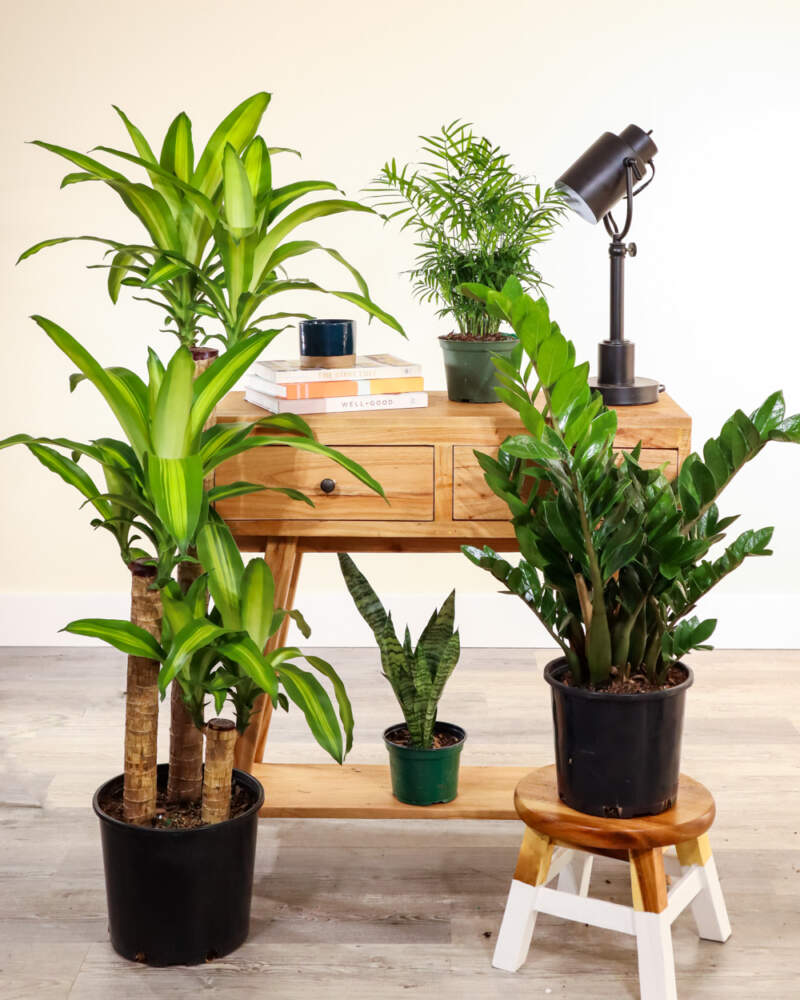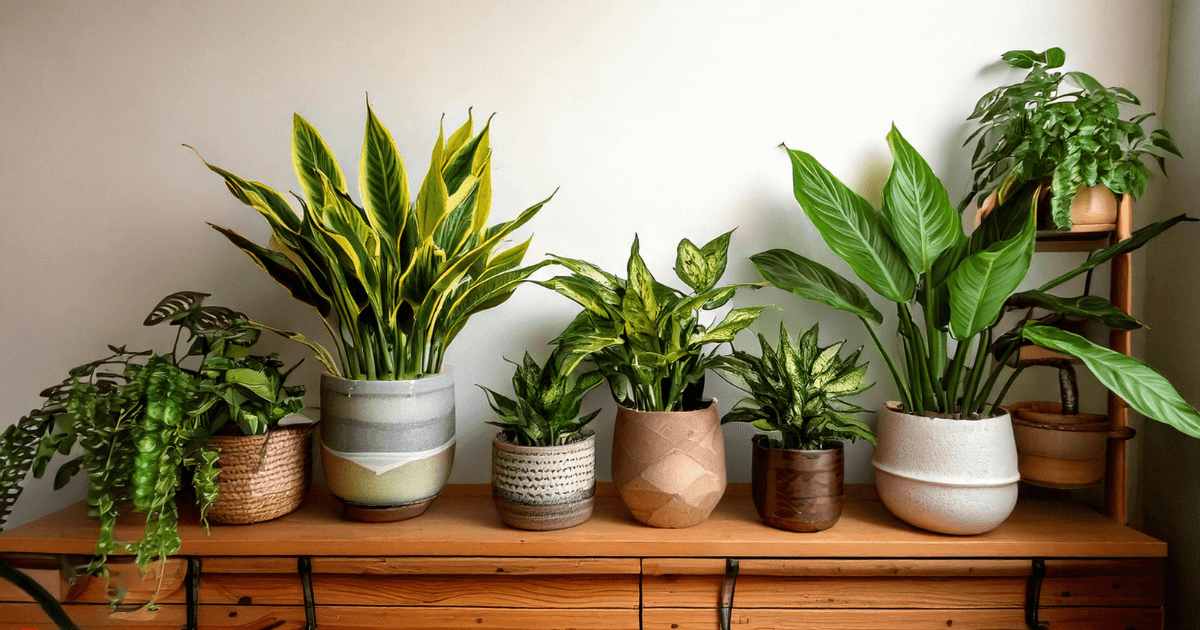Uncover the Tricks of Low-Light Indoor Plants and Just How They Boost Your Setting
Low-light interior plants have garnered enhancing attention for their one-of-a-kind capability to enhance both visual charm and ecological quality within homes and work environments. These resistant species, including the Snake Plant and Peace Lily, not just grow in challenging lights problems yet likewise play a critical function in air purification and emotional wellness.
Benefits of Low-Light Indoor Plants
Although many individuals presume that interior plants require bountiful sunshine to grow, low-light indoor plants provide a plethora of benefits that make them optimal for various environments. One of the primary benefits is their versatility; they can prosper precede with restricted natural light, such as offices, basements, or spaces with tiny windows. This feature allows individuals to enhance their environments with plant, adding to enhanced appearances without the demand for considerable lights adjustments.
Furthermore, low-light indoor plants can dramatically enhance interior air high quality by releasing and filtering system damaging toxins oxygen, making living rooms healthier. Study has shown that certain selections can soak up pollutants, hence promoting a cleaner environment. In addition, they can boost psychological wellness by lowering anxiety and increasing performance. The visibility of plants has been linked to higher feelings of harmony and emphasis.
Furthermore, low-light plants usually need much less upkeep than their sun-loving equivalents, making them excellent for hectic individuals or those brand-new to horticulture. Their strength enables them to love minimal intervention, thus offering a rewarding experience for plant fanatics and amateurs alike. In recap, low-light indoor plants serve both aesthetic and practical objectives, making them important enhancements to any kind of room.
Top Low-Light Plant Varieties
Low-light interior plants been available in a variety of varieties, each offering distinct features and advantages suited for dim atmospheres. Amongst one of the most prominent ranges is the Serpent Plant (Sansevieria), understood for its air-purifying abilities and building leaves. This resilient plant prospers on forget and can tolerate a wide variety of light problems.
An additional outstanding choice is the ZZ Plant (Zamioculcas zamiifolia), which includes shiny, dark eco-friendly fallen leaves and is very drought-tolerant. Its versatility makes it a preferred for offices and homes with limited sunlight.
The Pothos (Epipremnum aureum) is also a leading contender, with its tracking vines and heart-shaped fallen leaves - Best low-light indoor plants. This versatile plant can be trained to climb up or waterfall, including visual rate of interest to any kind of room

Care Tips for Low-Light Plants
Taking care of low-light interior plants needs a nuanced understanding of their particular needs to make sure ideal development and vitality. It is necessary to select the ideal potting mix, as a well-draining soil is vital to prevent root rot. A mix designed for houseplants, frequently containing peat moss and perlite, works well for a lot of low-light ranges.
Watering is another key aspect of Recommended Reading care. Low-light plants usually need much less regular watering contrasted to their sun-loving counterparts. It is a good idea to check the top inch of dirt; if it feels completely dry, it's time to water. Overwatering can result in difficulties such as mold and origin decay.
Fertilizing ought to be come close to with care. During the expanding period, a useful content watered down liquid fertilizer can be applied monthly, but in winter season months, lots of low-light plants enter inactivity and need little to no fertilization.
Lastly, it's essential to regularly clean the fallen leaves to get rid of dirt, allowing for better light absorption. By sticking to these care tips, you can grow a growing environment for your low-light indoor plants, enhancing both their appearance and longevity.
Enhancing Air High Quality With Plants
Indoor plants play a significant role in improving air quality within homes and office. With the procedure of photosynthesis, these plants absorb carbon dioxide and launch oxygen, contributing to a healthier ambience. Additionally, specific low-light indoor plants have the capacity to filter harmful pollutants, such as formaldehyde, trichloroethylene, and benzene, which are generally located in indoor settings.

Furthermore, the visibility of indoor plants can enhance moisture degrees, which aids ease completely dry skin and respiratory problems, better boosting total health. This capacity to boost air top quality not only promotes physical wellness yet additionally sustains psychological health.
Incorporating low-light indoor plants into your living and working areas can cause a much more stimulating and vibrant setting (Best low-light indoor plants). Purchasing these natural air cleansers is a straightforward yet efficient method for boosting interior air high quality and promoting a much healthier way of life
Developing a Serene Indoor Area
The combination of plants into living spaces not just from this source boosts air top quality however likewise adds to a relaxing atmosphere. Low-light indoor plants, such as serpent plants and pothos, are particularly effective in producing a peaceful environment, as they thrive in conditions that may otherwise be unwelcoming for various other plant. Their lavish vegetation gives a relaxing visual, decreasing anxiety and advertising relaxation.
Including these plants right into your home or office can evoke a feeling of tranquility and well-being. Strategically putting them in locations where you spend considerable time, such as living workspaces or rooms, enables for an immersive experience with nature, which has actually been revealed to boost state of mind and cognitive function.
Moreover, the mild activity of leaves in response to air movement can produce a dynamic visual aspect that improves the overall setting. Take into consideration utilizing a variety of plant elevations and structures to add deepness and rate of interest to your space. With thoughtful positioning and care, low-light interior plants can change any location right into a tranquil haven, fostering not just aesthetic complete satisfaction but additionally emotional and emotional health.

Conclusion
Integrating low-light interior plants into numerous environments yields considerable advantages, including improved air high quality and improved visual allure. The transformative power of low-light plants emphasizes their worth in enhancing both occupational and domestic settings.
Although many people assume that interior plants call for bountiful sunshine to prosper, low-light indoor plants offer a wide range of benefits that make them excellent for various settings.Additionally, low-light interior plants can substantially improve indoor air top quality by filtering harmful toxic substances and releasing oxygen, making living areas healthier. Additionally, certain low-light indoor plants possess the capability to filter damaging contaminants, such as benzene, formaldehyde, and trichloroethylene, which are frequently discovered in interior atmospheres.
Low-light indoor plants, such as serpent plants and pothos, are particularly reliable in creating a calm atmosphere, as they grow in conditions that may otherwise be unwelcoming for other greenery.Integrating low-light interior plants right into different settings returns significant benefits, including enhanced air high quality and improved aesthetic allure.
Comments on “Transform Your Living Space with the Best Low-Light Indoor Plants”